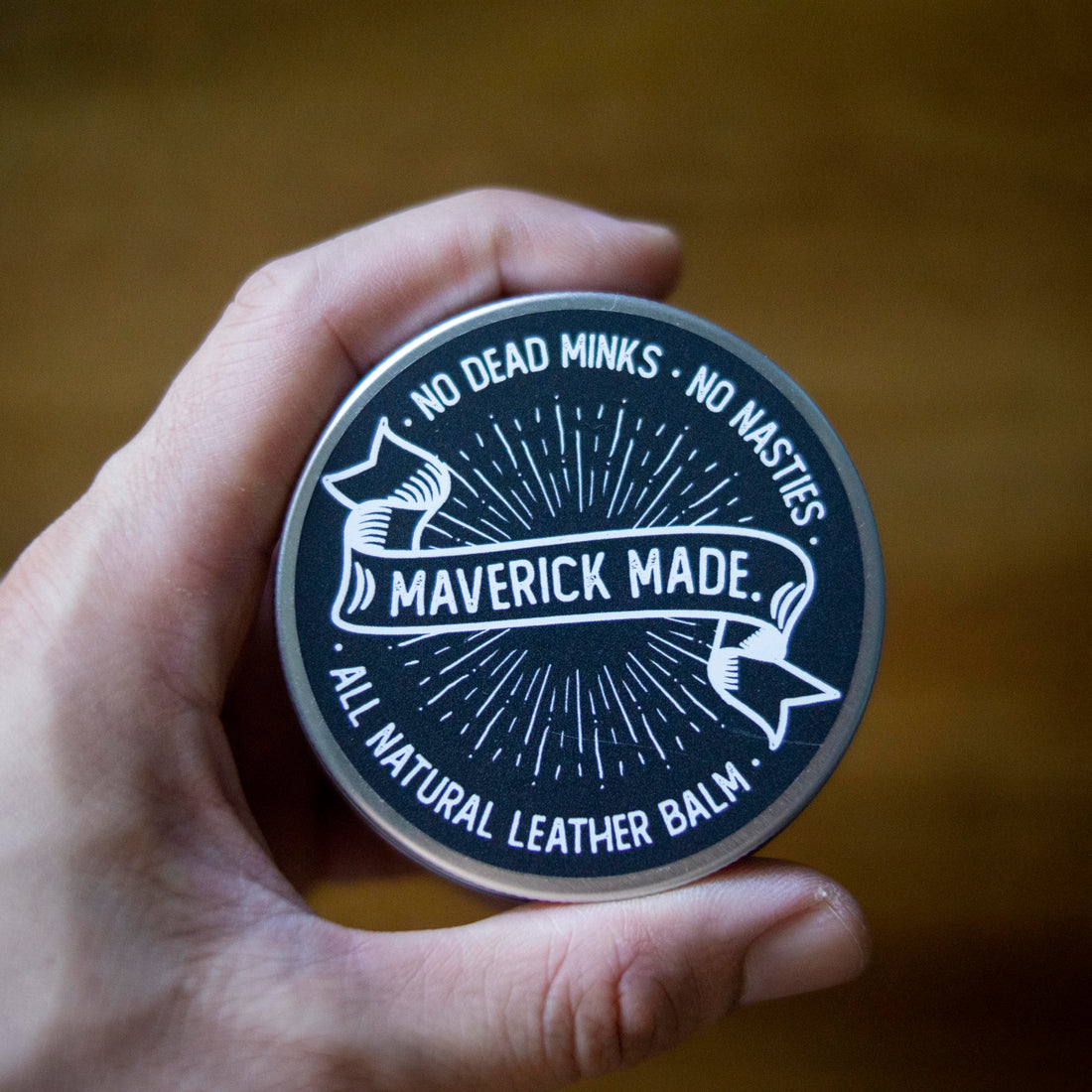
Our Leathers and How To Care For Them
Share
First off, I want to thank you for supporting my humble business by purchasing my handiwork! It means the world to me that you believe in the things I do, and your purchase helps keep food on he table, a roof over my head, and I get to keep honing my craft to bring you better stuff next time.
About the leathers I use:
I believe in being kind to the environment, that's why I made the choice to only use Italian or Japanese vegetable-tanned leather that are by-products of the meat industry. No animal is killed for it's skin with Maverick Made.. This is also why you'll rarely see us craft with exotics such as crocodiles or snakes. Ethics and origin are huge priorities when deciding on the various materials I use for my products.
Generally speaking, there're 2 common tanned leather types you should know about - Chrome-tan, and veg-tan.
Chrome-tanned leathers account for about 90% of leathers that come out of tanneries from all over the world! These leathers are tanned using chromium salts, other heavy metals and nasty chemicals such as arsenic and formaldehyde. Tanning with such chemicals drastically increases turnover from months to days as compared to traditional vegetable-tanned leather. Chrome-tanning is still the preferred method for most industries like fashion, automobiles and upholstery because of its quick turnaround and significantly cheaper manufacturing costs.
About vegetable-tanned leather:
Considered to be the benchmark of the industry with it's strength and durability, veg-tanned leather can last for more than a lifetime if well cared for.
Dating as far back as 3000BC in Sumer - modern day Iraq and Kuwait, the tanning process uses natural vegetable tannins to change the protein structure within the hide, changing it from a raw animal skin into leather. The organic substances applied in the process preserve, strengthen, and eve color the hide.
Tannins in leather – like those in wine – each have a distinct effect on the substance to which they are bonded. While grapes provide the tannins for wine though, vegetable tanning uses tannins from tree bark, leaves and roots (among others). Common trees used include the birch, catechu, chestnut, mimosa, oak, and willow.
No synthetic coatings on this leather means that the surface can breathe, absorb moisture and oils, and take on a distinct patina over time that gives it a special value even when it has seen many years or miles of wear… sometimes especially then.
In summary:
Chrome-tan
Pros
-
Significantly cheaper material
-
Softer, lighter, and heat/moisture resistant
-
Wide variety of vibrant colours because of synthetic dyes and chemicals
Cons
-
Prone to cracking and separation of layers
-
Will not gain a patina because of synthetic coatings or chemical treatment during tanning process
-
Gets weaker overtime
-
Extremely damaging to environment, wildlife and people, with chemical byproducts dumped (legally or illegally), especially in developing countries
Veg-tan
Pros
-
Tanned with natural oils and tannins from trees, leaves, roots, etc
-
Sweet aroma
-
Extremely hardwearing, lasting a lifetime or more if cared for
-
Gains patina from absorbing bodily oils
-
Most environmentally friendly method of tanning leather
Cons
-
Significantly expensive material
-
Long tanning process
-
Uses a lot of water
-
Feels stiff at first, and may take awhile to break in
-
More susceptible to water damage
What to expect of your new vegetable-tanned product?
It's going to feel stiff, and your cards will feel super snug at first. Fret not, with some usage and patience, the leather will soften as the fibers start to shift and mould around your cards or item. Eventually, it will feel nice and supple, and getting your cards out will get easier.
A patina will develop. It's not looking tired - it's aging beautifully the way it's supposed to (like you, I suppose!). Patina is a sign that you're using the best quality full-grain veg-tanned leather commercially available, this means the grain is tightest, and resists moisture very well. Full-grain leather incorporates the entire grain of the hide with all the imperfections and inherent toughness of the material.
Sidenote: The term "genuine leather" is a double entendre in the industry - it does mean real leather, but it also often reflects the lowest quality of the hide (aka split leather separating the tightest grain with the loosest and weakest). Many popular fashion houses opt for genuine leather to save on costs.
How to care for your product?
The best care is non-neglect! Keep using it - the oils from your hands or body will constantly nourish the leather, keeping it from moulding or drying out. Keep away from extremely wet or hot places. If you do get your product soaked, remove all items from it and dry it in a well ventilated area, away from direct sun to prevent sun-tanning or drying out the natural oils within the leather. In front of a fan, by a window, overnight is fine.
This product is also really good for nourishing your veg-tan leather goods. Every 2-3 months is great, 6 months if you're busy, yearly at minimum if you want it to last.

